
All categories
Featured selections
Trade Assurance
Buyer Central
Help Center
Get the app
Become a supplier

(1476 products available)


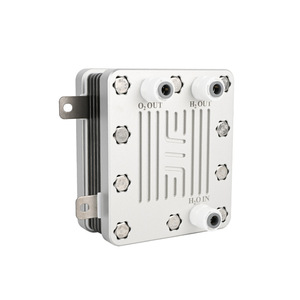


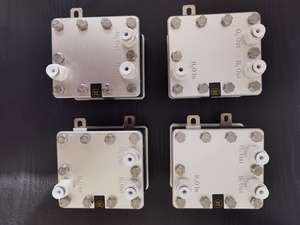







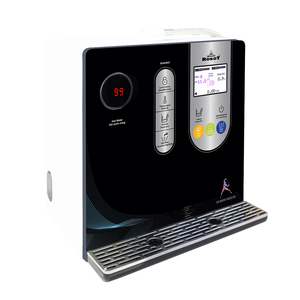


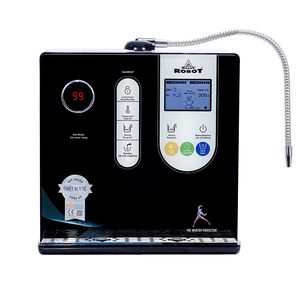



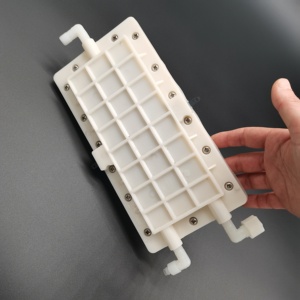


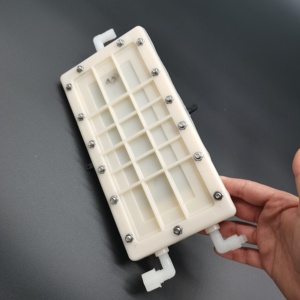











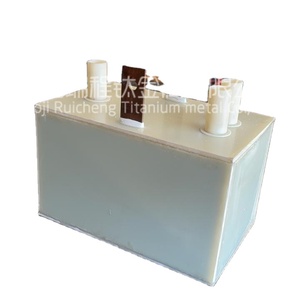




Alkaline Exchange Membrane Electrolysis Cells
This cell features an ionic conductive membrane that isolates an anode from a cathode. Most of the membranes used in these alkaline electrolysis cells are the distinctive polythene membrane. They facilitate hydroxide like ions to pass through while blocking an electrolyte from penetrating. One of the key benefits that these cells have is that they are able to operate at low temperatures. This increases overall production and makes them cheap to operate. The cells are therefore suitable for large-scale hydrogen generation, especially in industries.
Pressurized Alkaline Electrolysis Cells
These electrolysis cells operate by holding electrolysis elements under pressure to bulk up the hydrogen production. The cells intend to produce hydrogen at high pressure where compression will not be required. This can aid in cutting down operational costs as well. The cell design comes with added functionality. High-pressure hydrogen production eliminates many steps in the traditional hydrogen production processes integration with industrial hydrogen utilization systems.
Low-Temperature Alkaline Electrolysis Cells
As the name suggest, these cells are meant to carry out electrolysis at low temperatures below 80 degrees Celsius, which are feasible. Electrolysis can thus be initiated using waste heat from other processes that operate at low temperatures. Easy to maintain is one of the advantages of these hydrogen fuel cells. Maintenance is usually required when the temperatures are too high. The cells hence find applications in scenarios with process heat or low-temperature sources available.
Bipolar Plate Alkaline Electrolysis Cells
This cell utilizes a bipolar plate to transport gas and liquid through the system and provide electrical connection between adjacent cells. The plates are manufactured with channels through which electrolyte and water will pass. It helps in increasing the overall efficiency through facilitating mass transfer. These cells are ideal for use in large-scale hydrogen production systems.
Hydrogen Production
This is one of the major applications. Green hydrogen production has become a big thing these days in many industries. The alkaline electrolyser cells can easily draw hydrogen from water and use it to produce ammonia, such as fertilizers, chemicals, and refining. Hydrogen acts as a reducing agent in steel production. Users have to ensure that they invest in this product because of its vast application, particularly because people are mining hydrogen for diverse uses and need efficiency and sustainability. The cells are efficient and offer eco-friendly ways to generate hydrogen, especially for users in hydrogen-intensive industries.
Energy Storage Systems
Alkali electrolyte cells can produce hydrogen as a means of storing excess energy from renewable power generation, such as solar and wind. The energy will be stored in the form of hydrogen. The hydrogen will then be converted back to electricity whenever the users need it. This method can be very effective in balancing electricity grids and providing a reliable energy source. There is a pressing need to go for a sustainable energy solution as the world continues to suffer the consequences of climate change. These electrolyte cells will help to store energy sustainably.
Metallurgy and Chemical Manufacturing
Since alkaline electrolysis cells produce hydrogen, they are used in metallurgy processes like steel making. In this process, hydrogen will reduce iron oxides to pure iron. Chemical manufacturing will also utilize produced hydrogen in synthesizing like chemicals and methanol, which are vital in many chemical production processes. The cells contribute to more sustainable and effective hydrogen production ways to industries.
Water Treatment and Remediation
Alkaline electrolysis cells can also be used for water treatment and remediation processes. Hydrogen and oxygen are produced by these cells during electrolysis. They contribute to the oxidation of contaminants in water and hence lead to more purified water. Alkaline electrolyzers are also able to treat wastewater in industries. They help reduce the contaminants and discharge pollutants into the environment. This application will help improve the environmental sustainability of the users whose business is in water treatment service provision.
High Efficiency
These cells operate at above 70%, which is the most important thing compared to other electrolysis methods. This great efficiency makes the cells ideal for people who want to generate green hydrogen without incurring exorbitant costs. Great energy savings can thus be achieved.
Durability
These cells are made to last. They are constructed with durable materials that can withstand harsh environments. They do not require frequent replacement or repair, which is a very important thing for any business. Long operational life ensures consistent hydrogen production.
Low Operating Costs
The cells have generally low operating costs because they use cheap catalysts and do not need high-level electrocatalysts like precious metals. The cells also operate at low temperatures. There is no need for cooling systems, which may increase the operation costs. Users can reduce the overall Hydrogen production costs and still make it to their business.
Scalability
These cells can easily scale their operation to meet varying hydrogen production demands. Whether a client needs a small-scale production facility or a large industrial complex, these cells provide the required flexibility. It thus makes them suited to diverse industries, from chemical manufacturing to energy.
The alkaline electrolyzers are very easy to install and use. They can be plugged and played and can be easily moved to suit different needs. To install the hydrogen electrolysis equipment, users have to fix the parts together per the user manual. They have to find the right electrolytic solution to use and connect the cells to a power source. After doing that, they have to connect the needed water and hydrogen outlets. The users then adjust the working pressure and temperature to the required settings. They have to switch the power on and slowly increase to the operational levels needed. After the cells have been set up, monitoring tools should be used to monitor production. The production should be checked for abnormalities.
Regular Inspections
When inspecting, users will be able to notice any small issue before it becomes a big one. They will need to visually check the cells, pipes, and other systems components for leaks, corrosion, or damage. Monitoring production parameters like pressure and temperature will help spot anomalies early.
Electrolyte Maintenance
Users have to ensure that the electrolyte levels always remain optimal. Poor levels can hinder the cell's performance and may even damage the unit. They have to check the electrolyte concentration and replace it when it is depleted. This depends on the electrolyte used. Some will require periodic replacement, while others will only top up.
Membrane Maintenance
Membranes will require close attention since they are the main components that inhibit the electrolyte from penetrating into the cell. Regular check for wear or damage will be needed, especially when performance drops. Users have to replace membranes that show signs of wear occasionally.
Electrode Maintenance
Electrodes will require regular maintenance since they are one of the most used components in the cells. Users should inspect electrodes for signs of corrosion, particularly when they need to produce more hydrogen. Old or corroded electrodes will have to replaced. Proper maintenance will fix this. It will be good to go for high-quality electrodes since they will last long.
Component Checks
Check all the auxiliary components connected to the cells, such as pumps and heat exchangers, for wear and tear. Users will need to replace worn-out parts to keep the system functioning at its peak performance. Failure to do this may cause the cells to work ineffectively.
Use quality materials
When constructing the cells, make sure that only quality materials have been used. Premium materials have high resistance to corrosion and wear. They are able to handle the harsh alkaline environment of electrolyzers. Also, go for an electrolyzer that uses high-quality membranes and electrodes.
Monitor pressure and temperature closely
The electrolysis process can generate high pressure and temperature within the cells. Users have to monitor these parameters unless they want to endanger their life. The hydrogen is also very flammable. Any increase in the pressure may result in an explosion. Appropriate safety devices such as pressure relief valves need to be in place to avoid endangering operators.
Maintain proper ventilation
Ventilation is crucial due to the explosive nature of the produced hydrogen. Adequate ventilation systems should be installed to ensure that any accumulated hydrogen will dissipate quickly, and there will be no explosion. Regular maintenance of ventilation systems needs to be done to ensure it is operating effectively.
Regular maintenance
Regular maintenance of the alkaline electrolysis cells is a key factor in maintaining hydrogen production. People using these cells have to follow the manufacturer's guidelines on maintenance scheduling. It will ensure that the cells are operating safely and effectively. They have to repair or replace damaged components as they might pose safety hazards.
Hydrogen Detection Systems
Hydrogen detection systems should be installed on these cells. They should be able to detect accumulations of hydrogen and trigger appropriate alarm systems. There should be action taken to prevent potential risks. There should be detection devices that can promptly detect hydrogen concentrations above threshold levels. Immediate evacuation or mitigation can take place.
Alkaline electrolyzers usually operate at temperatures that range from 50 to 80 degrees Celsius. There are those that work above this. Most of them work effectively below the high-temperature range, which makes them easy to integrate with low-temperature heat sources.
The electrolytic cell works by splitting water into oxygen and hydrogen using electricity and an alkali solution. This allows users to produce renewable hydrogen using clean electricity.
Users have to do regular inspections of the hydrogen production system to ensure its electrolytic solution levels and electrolyte membranes and electrodes are in good condition. Routine maintenance will prolong the cell's operational life and enhance efficiency.
Yes, alkaline electrolysis cells are suitable for large-scale hydrogen production. They are cost-effective and reliable, making them ideal for large industrial operations.
One of the environmental benefits is that the cells produce hydrogen without producing greenhouse gases. They use water and renewable electricity to produce clean hydrogen. There are no emissions produced. They thus help to reduce carbon emissions.